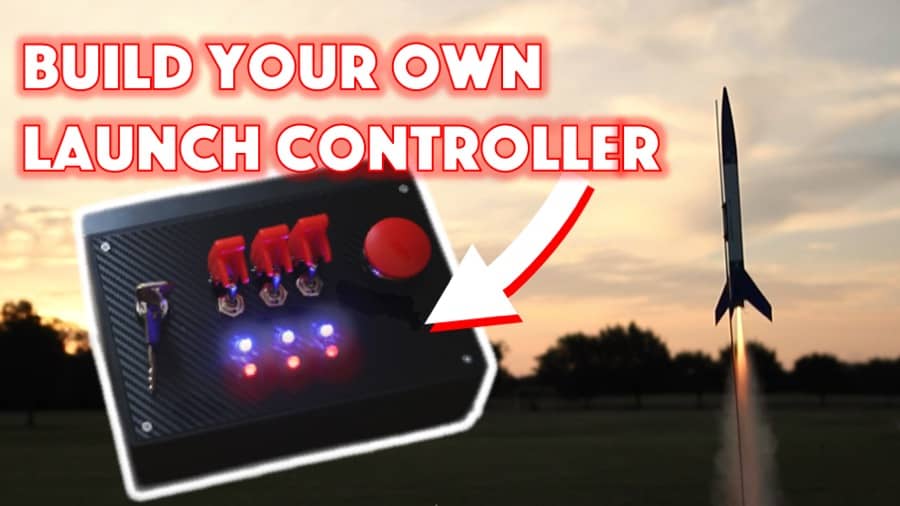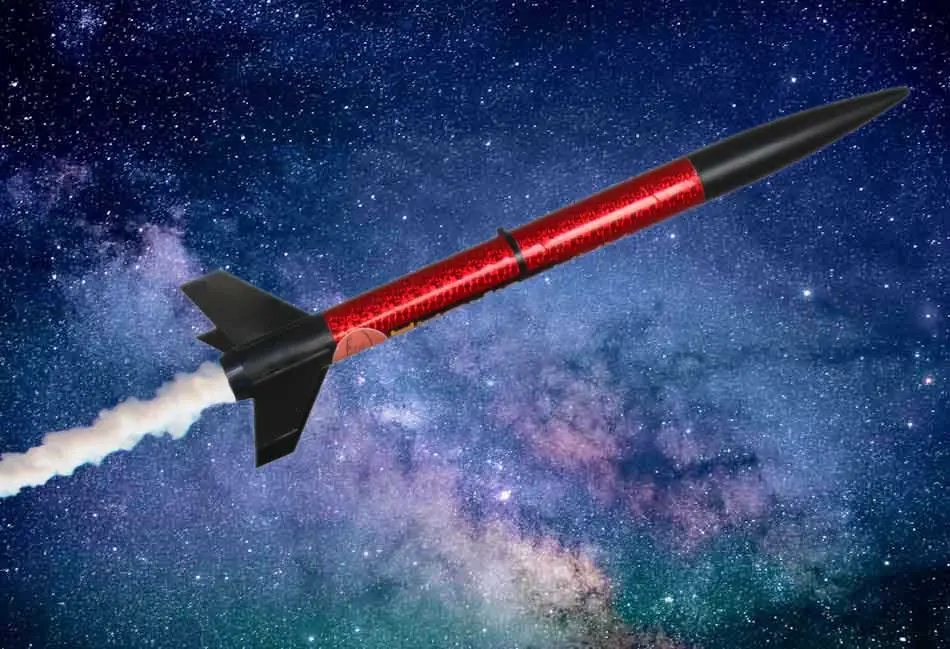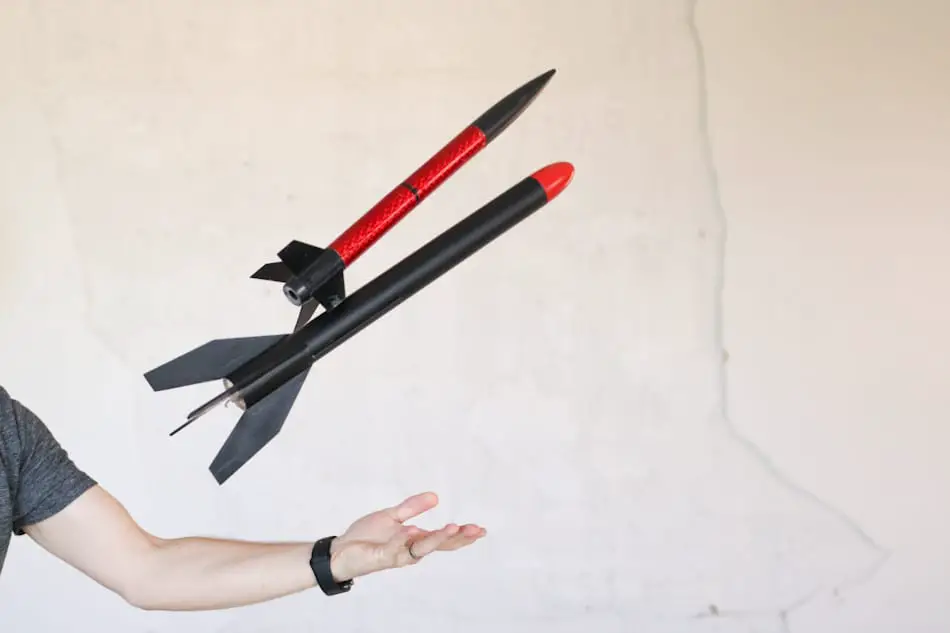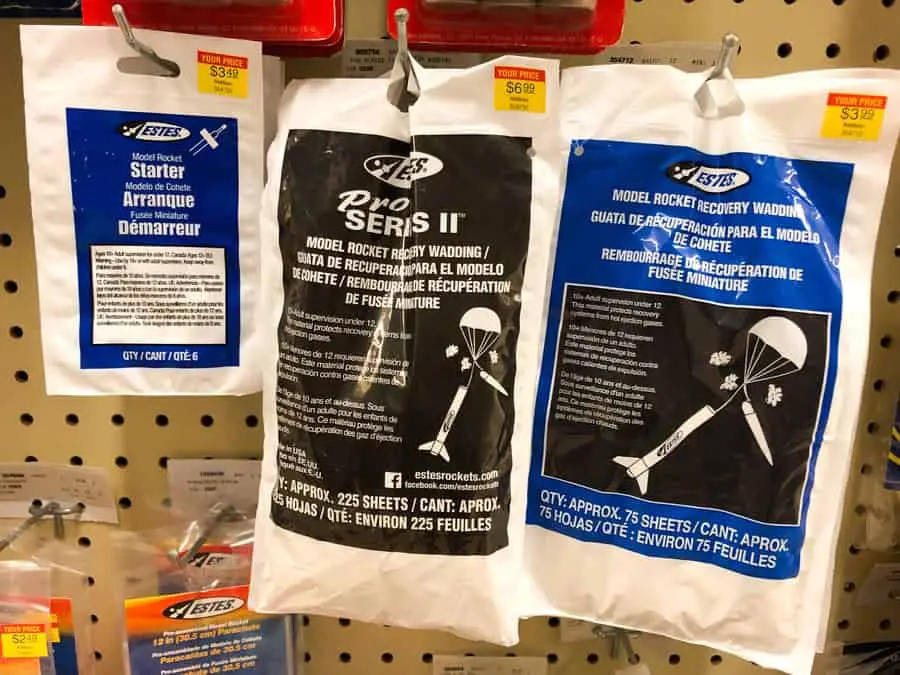
Launching a model rocket is perfectly legal with very few restrictions in most states, but there are a few states that make it more difficult than others. The most notorious of these is California. Let’s answer this question once and for all.
Is launching a model rocket legal in California? Yes. Launching a model rocket is legal in California, but you must first obtain permission from your local fire department and the owner of the property where you intend to launch. You can also only use motors certified by the California State Fire Marshal. Local laws may vary.
Launching model rockets is legal in every state, but some states have more restrictions placed on the activity than others, and California is one of them. Continue reading for all of the details on how to legally launch a model rocket in the state of California and even how to pursue high power model rocketry.
A brief disclaimer: we are not lawyers and this article does not constitute legal advice. This article is based on hours of our own research on the topic and an aggregation of the information we were able to find.
Are you still using the standard Estes controllers for your launches?
We just built our own beautiful launch controllers that make launches SO much more fun, and we documented EVERY single step and item purchased and put it into a step-by-step course that teaches you how to do the exact same thing.
Click here to learn more about how you can build your own launch controllers!

Legal Definition of a Model Rocket in California
When you ask someone whether you can launch a model rocket in California, everyone will say yes, but the details of that yes may be different. There is some confusion about the legal ways of launching model rockets in California because there was a somewhat recent change in the laws concerning model rockets.
Until 2016, California used a definition for model rockets and model rocket motors which made it very difficult for hobbyists to launch their chosen rockets.
The old definition of a model rocket according to the state of California was any toy or educational device that uses a model rocket engine and that does not weigh more than 500 gram (17.6 ounces) including the engine and payload.
Yikes! This would mean that any model rocket that weighs a little over a pound would require a special permit or it would be illegal for you to launch it. There are plenty of model rockets that weight over a pound after you put an engine in them!
The new definition of a model rocket reflects the National Fire Protection Association’s (NFPA) definition of model rocket listed in NFPA 1122, which is a definition widely accepted in most states, and it is also the definition used by the Federal Aviation Administration.
The new legal definition of a model rocket in California is a rocket that uses no more than 4.4 ounces of propellant that is slow burning, is made of paper, wood, or breakable plastic, contains no substantial metal parts, and weighs 53 ounces or less including the propellant.
Below is the checklist version of the definition that you can check your rocket against. If your model rocket does not check off each of these characteristics, it is not legally considered a model rocket. It is a high power rocket.
- Uses 4.4 ounces of propellant or less
- Slow burning
- Made of paper, wood, or breakable plastic
- No substantial metal parts
- Weighs 53 ounces or less including the propellant
These regulations allow much more freedom to launch different rockets. The increased weight limit allows for rockets that are almost 3 times heavier to be launched.
Requirements Before You Can Launch in California
Even with the changes in the law, California did not change the hoops you must jump through before you can launch a model rocket. Luckily, these hoops are relatively painless and understandable considering that setting a model rocket off in the wrong place at the wrong time could lead to a wildfire.
In order to launch a model rocket, you must first obtain permission from the property owner, even if that is a public space. For example, if you’re looking at a local park for your launch site, you would probably need to contact your local parks and recreation office to ask for permission.
You must also get permission from your local fire department, and this permission should be in writing so that you can easily prove to any law enforcement officers that may check in on you that you have permission.
California Regulations Concerning the Purchase of Motors
Nationwide there are a number of restrictions concerning who can and who cannot purchase model rockets of varying powers, but in California, there is even more regulations than in most states.
Age Requirements
In most states, anyone can purchase a model rocket motor with an impulse class of E or lower as long as they are not in a metal casing. You must be 18 to purchase any motor in a metal casing and you must be 18 to purchase motors with impulse classes of F or G.
The logic behind this is that after the E class, model rocket motors start to become very powerful. The total impulse of a model rocket’s motor doubles with each impulse class. After E, that doubling starts to be significant.
In California, you must be 14 years of age or older to purchase any model rocket with an impulse class of 1/4A through D. All other motors require that you are at least 18 years old.
Additionally, model rocket motors can be given to children ages 12 and up to use as part of an educational program that has been approved by the fire department. They must be under direct supervision when in use.
Motor Certification
The NAR and the TRA both require that model rockets be launched using motors that have been certified. The NAR and TRA both offer model rocket motor certification, and they have reciprocity with each other.
California has its own certification process for model rocket motors. The California State Fire Marshal carefully tests each model rocket motor and determines whether it is eligible for certification. Any model rocket you buy in California, or have shipped to you, should have a special seal on it that denotes that it is approved for use in California.
This particular regulation creates a lot of angst among California’s model rocket launchers because it is often the case that a new motor is released nationwide for some time before it becomes certified in California.
What about Composite Motors?
The legality of composite motors is another area where people may be misinformed because of the 2016 change in the regulations concerning model rockets in California.
Under the old safety codes, a model rocket motor was defined as commercially manufactured, non-reusable rocket propulsion device that is constructed of nonmetallic casing and uses a solid propellant.
This meant that until 2016 any model rocket motor that had a metallic case or that was reloadable could not be bought or used in the state of California. This ruled out a lot of composite motors.
As you can imagine, this was a major point of contention for many model rocket enthusiasts.
Under the new safety codes concerning model rocketry, a model rocket motor must be commercially manufactured, use solid propellant, and it cannot require mixing by the user. It also must conform to the definition of a model rocket motor used by the NFPA.
The NFPA defines a model rocket motor as a solid propellant motor with a total impulse of 160 Newton seconds or less and an average thrust of 80 Newtons or less.
This means that under the amended Californian safety codes, composite motors and reloadable composite motors are legal to buy and launch so long as they do not exceed a total impulse of 160 Newton seconds, and so long as their average thrust does not exceed 80 Newtons.
No matter what you still must obtain permission from the property owner of your launch site and permission from the local fire department.
Safe Launching in California
California also uses the NFPA standards that determine how you go about using your model rocket. This is not unusual. Many states use these standards to set their fire and safety codes, and they are also used by the NAR.
The list of regulations is long and outlines every detail on how to launch a model rocket safely. I will highlight some of the most pertinent ones below, but if you’re interested, you can find the complete standards on the NFPA website.
Recovery System
A model rocket must be equipped with some form of recovery system like a parachute. It also must be loaded with a flame-resistant recovery wadding.
The Motor
The motor installed in the model rocket must not exceed 320 Newton seconds of total impulse.
Only commercially manufactured, certified model rocket motors can be used for a model rocket launch. At the national level, certification happens through the National Association of Rocketry or the Tripoli Rocketry Association.
A single use motor cannot be reloaded, and any kind of motor cannot be altered in any way.
Launch Site
The launch site must be clear of power lines, tall trees, buildings, and dry brush and grass, and it must meet the minimum launch site dimensions listed below. The dimensions should not be shorter than half the highest projected altitude for the model rocket.
For example, if the projected altitude for a model rocket is 1,000 feet. The
minimum dimensions for the launch site should be 500 feet by 500 feet.
Minimum Launch Site Dimensions
| Installed Total Impulse in Newton Seconds | Equivalent Motor Type | Minimum Site Dimension |
| 0-1.25 | ¼ A and ½ A | 50 |
| 1.26-2.50 | A | 100 |
| 2.51-5.00 | B | 200 |
| 5.01-10.00 | C | 400 |
| 10.01-20.00 | D | 500 |
| 20.01-40.00 | E | 1,000 |
| 40.01-80.00 | F | 1,000 |
| 80.01-160.00 | 2F ir 1G | 1,000 |
| 160.01-320.00 | 4F ir 2G | 1,500 |
(source)
Spectator distance from the model rocket’s launch system during ignition is also dictated in the NFPA code. If you’re using a motor with a total impulse of 30 Newton seconds or less, spectators should be at least 15 feet away from the model rocket.
If you’re using a model rocket motor with a total impulse greater than 30 Newton seconds, then spectators must be at least 30 feet away.
High Power Model Rockets in California
If you’ve ever watched any of the model rocket launches that people do in the Mojave Desert in southern California, then you know that to some extent, launching high power model rockets has to be legal in California.
And, indeed, it is. In order to launch high power rockets in California, you must obtain a special permit from the California State Fire Marshal, permission from the owner of the launch site, and permission from the local fire department as usual.
The California State Fire Marshal now as a way for you to begin the permit process through their website!
FAA Regulations
Of course, if you are launching a high power rocket in California or anywhere else in the United States, you will also have to comply with the Federal Aviation Administration regulations.
FAA regulations require that you notify the nearest FAA Air Traffic Control facility of the planned launch, and you may also need to obtain a permit from the FAA for the launch.
NAR and TRA Regulations
Generally speaking, the model rocket community and retailers of model rocket equipment work together to make sure the community members stay safe.
This means it is virtually impossible to purchase the required certified, high power model rocket motor without getting certified through the NAR or TRA.
There are three levels of certification: Level 1, Level 2 and Level 3. Each level allows you to purchase more powerful motors and each level is harder and harder to obtain. The process is meant to ensure the launcher has enough experience and knowledge to safely launch with these powerful motors.
Levels of NAR and TRA Certifications
| Certification Level | Impulse Classes You Can Buy |
| Level 1 | F and G class motors with average thrusts greater than 80 Newtons and H and I motors |
| Level 2 | J, K, and L motors |
| Level 3 | M, N, and O motors |
Join a Club
If you are looking to get into launching high power model rockets, then you are going to want to go about it legally. You don’t want to end up with a huge fine or worse just because you didn’t go through the proper processes.
Additionally, the laws and regulations around high power model rockets are there to help keep the sport safe and in good standing with the greater community. Going through the level 1 certification process with the NAR or TRA is a fun and educational experience that will ensure you have the knowledge and experience to launch high power rockets safely.
The best way to go about launching high power rockets is to join one of your local rocketry clubs, and California has many of them. Many of model rocket clubs already have ideal launch sites, permits, and waivers set up so that you do not have to get them for yourself.
Not only can a high power model rocket club help you launch legally, the members of the club have years of experience in model rocketry and are generally happy to share it with newcomers. Finding a model rocket mentor is one of the best ways to learn.
What About Experimental Motors?
If you’re thinking about experimental motors, you’ve probably heard talk of “rocket candy” or homemade model rocket motors using stump remover and sugar. These rockets are cheap and the processes for making them are simple but making your own model rocket motors is a dangerous activity.
The process may not look much more difficult than making a cake, but the simplicity lures some people into believing that it is safe. It is not.
That being said, plenty of model rocket enthusiast take to making experimental motors. If you’re interested in this subject, the best thing you can do is find a mentor who knows how to do it as safely as possible.
Regulations on Experimental Motors in California
All of the laws in the California Health and Safety Code states that all model rockets, including high power rockets, must be flown using commercially made motors that are certified by the California State Fire Marshal.
There is no clear cut pathway for obtaining permission to build and test experimental motors outlined in the regulations, but it does indicate that the California State Fire Marshal can give a license and permits for experimental rocket building.
The Pyrotechnic Operator Class 1
license, not to be confused with the Level 1 NAR certification, allows for the
manufacture, testing, and launching of experimental motors.
There are many hobby groups dedicated to making model rocket motor experimentation accessible and safe. If you are interested in experimental motors, you may want to contact a group like the Friends of Amateur Rocketry, Inc (FAR) or the Reaction Research Society that are devoted to the creation and testing of experimental rockets and motors.
Experimental motors may require some very special licensing if you’re to do legally in California. The FAR, for example, has an Explosive Manufacturing Permit from the Bureau of Alcohol, Tobacco, Firearms and Explosives, along with a long list of other permits.
So yes, even making experimental motors in California is legal so long as you get the proper licenses and permissions from the California State Fire Marshal.
Build Your Own Launch Controller
Don’t forget! You can ditch the stock controllers and confidently build your own from scratch using our step-by-step instructions and exact materials list! We promise this will make your launch experience 10x better, and using our course License to Launch you can be 100% confident you’ll be able to finish this project and be super proud of what you’ve built! Here’s a sneak peek below.





